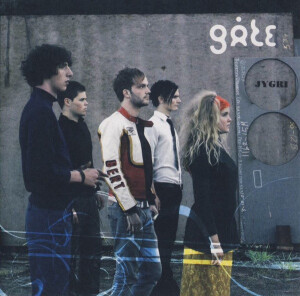 After listening to folk rock for more than 30 years it is easy to suspect you have heard it all — that every new record you get is merely a slight variation of some other record in your collection. And then along comes a quintet of Norwegians that completely sweeps you off your feet.
After listening to folk rock for more than 30 years it is easy to suspect you have heard it all — that every new record you get is merely a slight variation of some other record in your collection. And then along comes a quintet of Norwegians that completely sweeps you off your feet.
In Sweden we have always considered ourselves big brothers of the Norwegians. It is therefore slightly depressing that the best examples of Nordic folk rock come from our west neighbour. I do not expect the readers to remember a group in the 1970s called Folque: they started out playing Steeleye Span songs in Norwegian, but soon developed their own Nordic folk rock, not to be surpassed by any Swedish or Danish attempts. Later two of their members turned up in Folk & Rackare, THE Swedish/Norwegian folk group of the 1970s.
I strongly suspect that Gåte has listened to Folque and Folk & Rackare, but they also carry a lot of the popular music of the 1980s, 1990s and early 21st century with them. They have created their own personal mix on these 12 tracks, most which, interestingly, are labelled trad arr. This is folk rock that could not have been created 20 years ago.
The opening “Benedik og Aarolilja” sets the pattern. It opens with a slow mystic introduction, turning into a powerful treatment of an old medieval ballad, with Gunnhild E. Sundlis strong voice soaring over a wall of sound with clear traces of both heavy metal and hip hop.
Without belittling the group and its musicians I see Sundli as the star of the record. Her voice lifts it from good to excellent. She is more rock than folk, but in spite of that she never seems out of place in a folk rock context. And in songs like “Til Deg” she shows she also has a softer side, singing the first verses to a backing where an acoustic guitar has a great part.
“Springleik” is a traditional fiddle tune in which Sveinung Sundli’s fiddle and Magnus R Bormark’s electric guitar create mayhem. Music does not get much heavier than this.
My three favourite tracks are “Bruremarsj fra Jamtland”, a Swedish bridal march, and “Inga Litimor” and “Margit Hjukae,” both medieval ballads. The first is an instrumental tune, but Gunnhild Sundli adds a wordless vocal to great effect. It starts off rather hesitantly but builds up into majestic proportions; it’s the best version of that tune I have ever heard.
In “Inga Litimor” the backing is mostly programmed synthesizers, giving it something of an industrial feeling. “Margit Hjukae” is a return to the heavier side of Gåte, using quieter verses to build up the tension — I get the feeling of Led Zeppelin tackling a ballad.
I am very impressed with Gåte. They have taken folk rock into the 21st century. Do not let the fact that they only sing in Norwegian put you off; to me they are the biggest discovery yet of 2003. Play it loud and play it often. Young folk rock does not get better than this.
(WEA, 2003)
